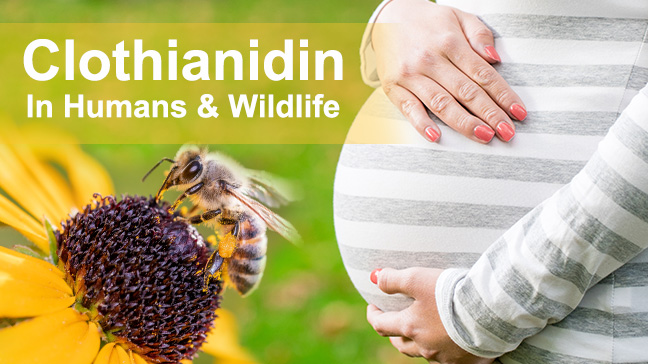Click "Allow Cookies" to consent to storing cookies on your device to improve your experience on our site. Learn more.
High Levels of Clothianidin found in Humans and Wildlife


July 20th, 2022
Clothianidin (CAS# 210880-92-5) is a neonicotinoid insecticide that was developed to replace some older pesticides such as organophosphates and pyrethroids, which pose harmful consequences on humans and other mammals.
Neonicotinoid compounds act by targeting and blocking the acetylcholine receptors (nACHRs) in the insect central nervous system (CNS) which results in metabolic activity inhibition.
Despite its neurotoxic effects on humans as well as wildlife, specifically honeybees, the US Environmental Protection Agency (USEPA) has authorized the use of these pesticides with some restriction. As a result, Clothianidin and other neonicotinoids have been widely used as an insecticide in agriculture and in homes as insect control.
In a recently published study, unexpected high levels of Clothianidin as well as other chemicals have been found in urine samples of 171 pregnant women from 6 different states and US territories. As a neonicotinoid that targets the CNS, Clothianidin may pose serious risks for both the mother and the developing fetus health due to its toxic effects. Therefore, Clothianidin has become a compound of interest in ongoing research to study its effects as well as its risks of exposure.
AccuStandard offers several Clothianidin Certified Reference Materials (CRMs) as the neat material or as single component solutions in either Acetonitrile or Methanol available for purchase to support your laboratory analysis.
Can’t find it in our catalog? Contact techservice@accustandard.com and we will customize a product that fits your specific needs.
- Katsnelson, A. (2022, May 18). Urine levels of toxic or concerning chemicals are high during pregnancy. Cen.acs.org. Retrieved June 15, 2022, from
https://cen.acs.org/environment/pollution/Urine-levels-toxic-concerning-chemicals/100/i18 - Clothianidin. American Chemical Society. (2014, February 14). Retrieved July 18, 2022, from
https://www.acs.org/content/acs/en/molecule-of-the-week/archive/c/clothianidin.html

